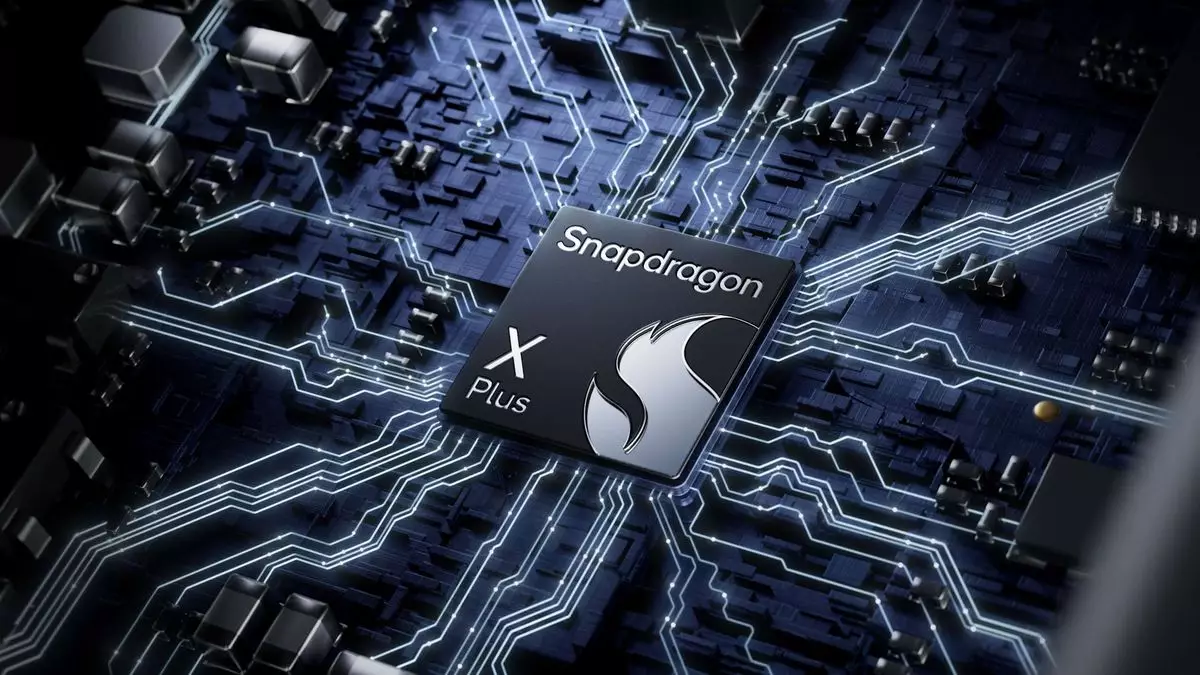The tech industry is no stranger to speculation and intrigue, especially when significant players like Qualcomm and Intel are involved. Recent reports, particularly from the Wall Street Journal and CNBC, have reignited discussions about a potential acquisition where Qualcomm could take over Intel’s chip design business. While such maneuvers often capture the imagination of analysts, investors, and tech enthusiasts alike, a closer examination reveals both the implausibilities and underlying motivations surrounding this rumored takeover.
At first glance, the intrigue behind Qualcomm’s approach to Intel hinges on market positioning and financials. Despite Qualcomm’s greater market capitalization, it lags behind Intel in revenue and operating income—two critical measures of financial health. The narrative suggests that Qualcomm, known primarily for its Snapdragon processors, is seeking to expand its influence in the semiconductor market. However, the practicality of a full acquisition is fraught with complications that merit deeper scrutiny.
Qualcomm has been largely successful with ARM-based architecture, powering mobile devices with impressive efficiency. On the other hand, Intel, a long-time steward of the x86 architecture, prevails in the desktop and server markets. To some extent, one must question the incentive for Qualcomm to acquire a company that operates under a different architectural paradigm. Doing so could lead to bifurcation rather than synergies.
The Question of Licensing: Why Acquire When You Can License?
An overarching question arises: what would motivate Qualcomm to execute a full takeover rather than simply acquiring a license to produce x86 chips? The x86 architecture is crucial for modern computing, underpinning most PCs and laptops. Qualcomm’s current ARM-based chips encounter constraints, particularly in emulating x86 software environments for Windows and various applications. A potential acquisition could eliminate these barriers, granting Qualcomm greater control over its product offerings.
However, licensing presents a more straightforward financial pathway. Qualcomm could pursue a licensing arrangement with Intel, allowing it access to x86 architecture with significantly reduced risk and investment. The hurdles tied to negotiating with Intel for favorable terms pose challenges, yet they are overshadowed by the potential regulatory scrutiny an acquisition would invite.
Regulatory Hurdles: A Wall of Resistance
Merger and acquisition endeavors in the tech industry have increasingly faced anti-monopoly scrutiny, and the Qualcomm-Intel deal would likely be no exception. Historical precedence suggests that any overtures toward consolidating such prominent technology firms could lead to significant regulatory pushback. Consider Nvidia’s unsuccessful attempt to acquire Arm Holdings. Such setbacks reveal a landscape where national and international regulatory bodies remain vigilant against potential monopolistic behaviors.
Even if Qualcomm’s intentions were altruistic, aimed at technological advancement and competitive growth, the sheer scale of the merger would likely raise red flags across various jurisdictions. The implications for competition in the semiconductor market would be critically examined, making it highly improbable that the deal would clear regulatory scrutiny without considerable concessions.
Although Intel has experienced rough patches, including delays in chip production and increased competition, its core business remains robust. The company enjoys substantial market shares in both client and server CPU markets. While potential financial woes loom, such as offloading its foundry service in dire situations, these remain hypothetical scenarios rather than current realities.
Intel’s resilience and market position complicate any narrative that would lead to a straightforward acquisition by a company like Qualcomm. Such a transaction could also provoke antitrust investigations, further complicating the circumstances for all parties involved.
The Future of Qualcomm and Intel: Collaboration Over Acquisition
As valuable as these discussions surrounding a Qualcomm-Intel acquisition might be, the reality points toward collaboration rather than acquisition. It is plausible that these two companies are engaging in preliminary discussions about partnerships or joint projects, which could yield mutual benefits without the complexities and risks associated with a full acquisition.
Future collaborations could encompass technology exchanges or even investment opportunities that bolster both companies’ positions without incurring regulatory challenges. Such partnerships might focus on enhancing production capabilities or joint development of new semiconductor technologies, offering a pathway for both companies to thrive without the laborious complexities of merging their operations entirely.
While the Qualcomm-Intel takeover rumors are captivating, they are more reflective of industry dynamics than viable business strategy. The mixture of regulatory hurdles, financial considerations, and the inherent market realities suggest that collaboration remains the more promising route for both companies in a rapidly evolving tech landscape.


Leave a Reply